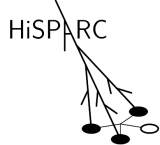Dr Maria Pavlidou
Introduction
This chapter aims at giving teachers and students a starting path when they are firstly introduced to the HiSPARC project. As with any research project, a good starting point is to do some background reading. There are many articles available, specifically written for secondary school students, which can be found at http://www.hisparc.nl/en/docent-student/lesmateriaal/routenet/. Using the link, the student goes to a starting location, like: ‘KS4’. This location is dark, subjects in the future fade to white showing a possible way to desired knowledge. Each cell contains a link to a pdf-document.
A good start is given below with articles divided into three categories: ‘core’, ‘extension’ and ‘further reading’. The core articles must be read before embarking on the project. The extension articles will allow teachers/students to enrich their knowledge around the HiSPARC project. The further-reading articles are not directly linked to the HiSPARC project but give useful background information in space and particle physics.
Theory
In order to understand the nature of cosmic rays and what is currently known about them students must read and go through the articles listed below:
Core articles
- “The Sun” by N.G. Schultheiss
- “Solar Winds” by N.G. Schultheiss
- “Introduction Cosmic Radiation” by N.G. Schultheiss
- “Early Research into Cosmic Radiation” by J. Kortland
- “Sources of Cosmic Radiation” by J. Kortland
- “Elementary Particles” by Koos Kortland
- “Muon Decay” by Koos Kortland
- “Air Showers” by Koos Kortland
- “Collisions inside Air Showers” by N.G. Schultheiss
Extension articles
- “Stellar Evolution” by J. Kortland
- “van der Waals & Wilson” by N.G. Schultheiss
- “Compton” by N.G. Schultheiss
- “Cherenkov” by N.G. Schultheiss
- “Standard Model – Particles” by N.G. Schultheiss
- “Standard Model – Forces” by N.G. Schultheiss
Further reading articles
- “Collisions” by N.G. Schultheiss
- “Michelson & Morley” by N.G. Schultheiss
- “Relativity” by N.G. Schultheiss
- “Mirrors” by N.G. Schultheiss
- “Parabolic mirrors” by N.G. Schultheiss
- “Lenses” by N.G. Schultheiss
- “Grinding lenses” by N.G. Schultheiss
- “Telescopes” by N.G. Schultheiss
- “The sky” by N.G. Schultheiss
- “The Universe” by N.G. Schultheiss
- “Colour” by N.G. Schultheiss
- “The Expanding Universe” by N.G. Schultheiss
- “Radio Telescopes” by N.G. Schultheiss
HiSPARC detector
If the participation of the school includes setting up a HiSPARC detector then it is strongly recommended that teachers and students familiarise themselves with the way the HiSPARC detector works by reading the articles below:
Core articles
- “The HiSPARC Detector” by N.G. Schultheiss
- “HiSPARC Detector – Single Detector” by Koos Kortland
- “HiSPARC Detector – Installation” by Koos Kortland
- “HiSPARC Detector – Detector Array” by Koos Kortland
- “HiSPARC Detector – Detector Station” by Koos Kortland
Extension articles
- “de Broglie” by N.G. Schultheiss
- “Fluorescence for high school students” by Niek G Schultheiss and Tom W Kool
- “Primary Particle – Angle” by Koos Kortland
- “Primary Particle – Energy” by Koos Kortland
Testing your knowledge
After reading the background articles we encourage students to test their knowledge by answering the questions below:
1. What are cosmic rays?
2. Where do they come from?
3. How much energy do they possess?
4. How do they obtain their energy?
5. What happens to cosmic rays when they enter the Earth’s atmosphere?
6. What is a scintillator and how does it work?
7. What is a photomultiplier tube and how does it work?
8. How does a HiSPARC detector work?
9. What particles can the HiSPARC detector record?
10. How can we know for sure if a hit measured by the HiSPARC detector station was caused by a cosmic
ray?
11. What technologies are being used in the HiSPARC detectors?
12. How could you reproduce the direction of the cosmic ray particle?
13. What are the basic steps when doing scientific research?
14. Is it necessary to formulate a hypothesis before you start your research?
15. How can you check if the HiSPARC data you are using for your analysis are reliable?
16. Is it necessary to do the same research multiple times?

